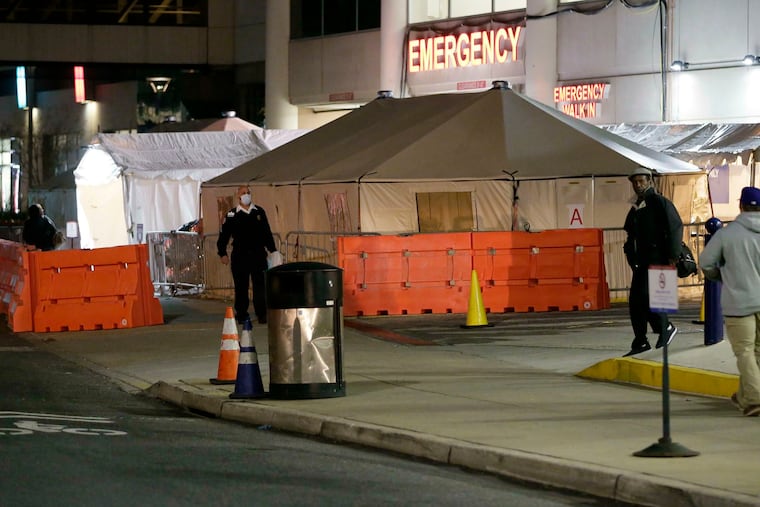As COVID-19 cases rise in Pa., N.J., and Del., so do hospitalizations
Hospitals in the region have a slight increase in admissions for COVID-19, but so far, the curve is still pretty flat.

It can’t be called a spike, or a surge, or even a resurgence, but hospitals in Pennsylvania, New Jersey, and Delaware are starting to see an uptick in COVID-19 admissions, a delayed ripple effect of increases in daily cases in the region.
Data from the states show that neither cases nor hospitalizations are anywhere near the levels reached in the spring, when the region was reeling from the first devastating wave of the pandemic. Currently, hospitals still have plenty of capacity.
But since the end of August, the average number of new coronavirus cases reported each day nearly doubled in Pennsylvania and almost tripled in New Jersey. Compared with a month ago, average new cases a day have jumped by more than 400 in Pennsylvania, surpassing 1,000 per day last week, and increased by nearly 340 in New Jersey to more than 650, according to an Inquirer analysis of New York Times case data.
This new wave of cases is driven largely by young people, particularly college students, an age group that generally does not get sick enough to need hospitalization.
Even so, the impact is being felt at hospitals, based on state data. Pennsylvania currently has an average of about 600 COVID-19 patients in hospitals, about 200 more than two weeks ago. New Jersey, which has had a steady decline for months, currently has almost 600 COVID-19 patients in hospitals, up from about 450 in late September. Delaware has about 90 COVID-19 patients in hospitals, up from about 70 in late September.
Philadelphia hospitals have not seen an uptick in hospitalizations — at least, not yet, city health department data show.